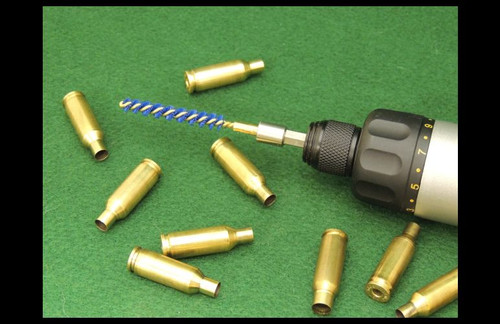There are 2 camps on this. The most important part is being consistent with the sequence of activities to ensure consistent neck tension from one group of reloads to the next. Also, I'm annealing after each firing, which makes the work hardening less of a concern as compared to some shooter's practice of annealing after every 3rd firing.
For me it just depends on the cartridge and rifle.
1. Range Brass - gets annealed before any other activity because I have no idea on the round count
2. Bulk Brass (ammo, such as 223, that will be shared between several different firearms) - I treat similar to Range Brass in that the chambers may vary significantly so I anneal first.
3. Precision Brass / Dedicated Rifle brass - I anneal after FL Resizing, but before I neck expand.
Fun Fact: It doesn't matter whether you anneal when case is dirty or after its clean. I shoot a lot of suppressed so I prefer to anneal the cases after they have been wet tumbled. I like being able to also visually confirm the heat temp line progression.
For precision cases I polish the neck (inside & outside) to remove the metal oxidation that results from annealing... I don't want to damage my premium dies. With the bulk ammo, I don't worry as much (cheaper dies) and I let the steel pins do some of the work.
---Pick Your Poison---
The benefit of annealing at the beginning is that eliminates any case hardening from multiple shot brass or cases with excessively-oversized chamber and added convenience of not having to deal with removing case lube before annealing.
The benefit of annealing after resizing is eliminates all case hardening and don't run risk of scratching the walls of FL Sizing Die with any metal oxide on outside of freshly annealed case.
For me it just depends on the cartridge and rifle.
1. Range Brass - gets annealed before any other activity because I have no idea on the round count
2. Bulk Brass (ammo, such as 223, that will be shared between several different firearms) - I treat similar to Range Brass in that the chambers may vary significantly so I anneal first.
3. Precision Brass / Dedicated Rifle brass - I anneal after FL Resizing, but before I neck expand.
Fun Fact: It doesn't matter whether you anneal when case is dirty or after its clean. I shoot a lot of suppressed so I prefer to anneal the cases after they have been wet tumbled. I like being able to also visually confirm the heat temp line progression.
For precision cases I polish the neck (inside & outside) to remove the metal oxidation that results from annealing... I don't want to damage my premium dies. With the bulk ammo, I don't worry as much (cheaper dies) and I let the steel pins do some of the work.
---Pick Your Poison---
The benefit of annealing at the beginning is that eliminates any case hardening from multiple shot brass or cases with excessively-oversized chamber and added convenience of not having to deal with removing case lube before annealing.
The benefit of annealing after resizing is eliminates all case hardening and don't run risk of scratching the walls of FL Sizing Die with any metal oxide on outside of freshly annealed case.


Comment